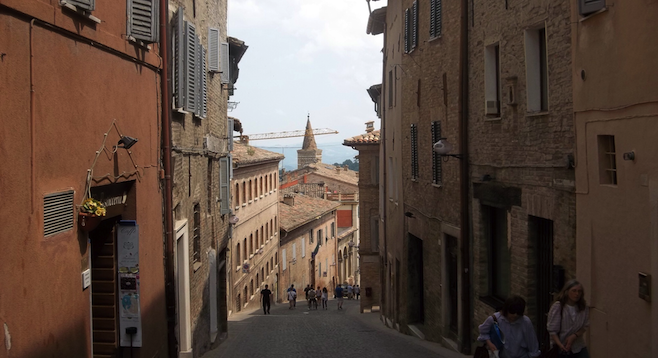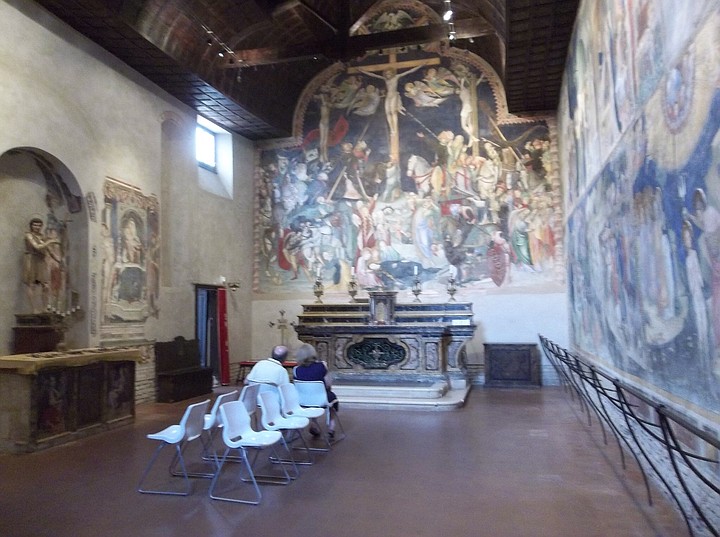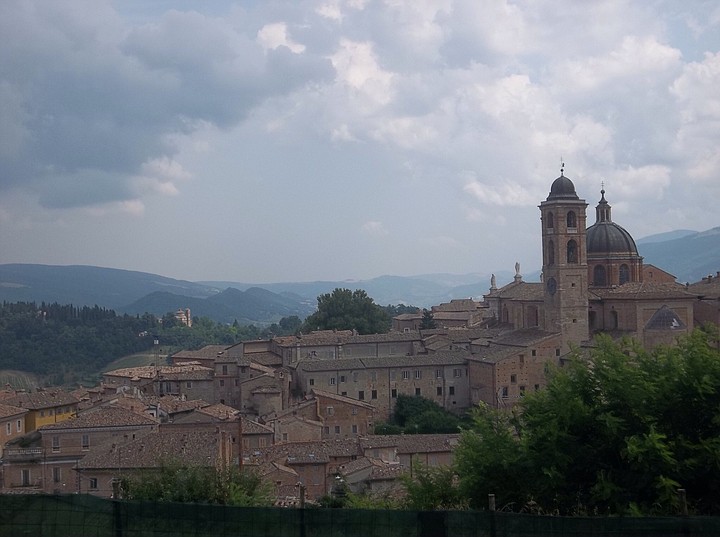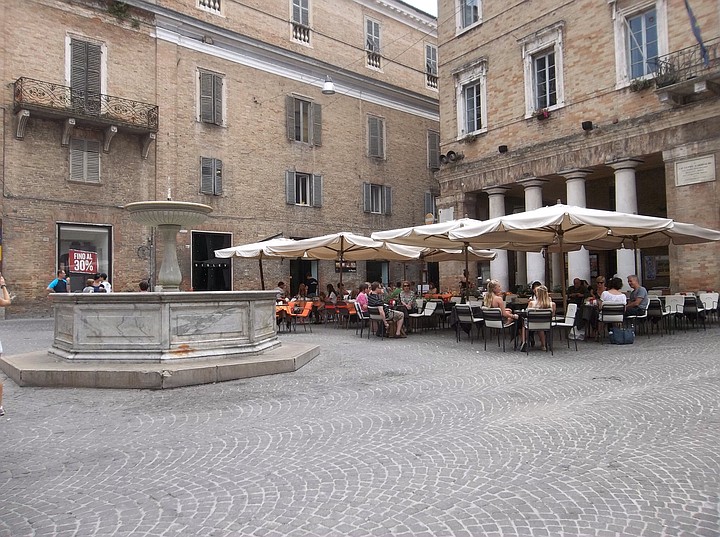 Facebook
Facebook
 X
X
 Instagram
Instagram
 TikTok
TikTok
 Youtube
Youtube

Urbino, a former center of culture during the Renaissance, has largely been forgotten by tourists due to its location in the Marche region of Italy. But, despite having far fewer visitors than its more glamorous rivals of the period, Florence and Siena, Urbino’s beauty is comparable to any hill town in Tuscany or Umbria.
A UNESCO World Heritage site, Urbino has stagnated culturally and economically since the 16th century – which has contributed to its status as one of the best preserved Renaissance towns in the country. With its narrow winding medieval streets and striking collection of 15th-century buildings, a visit here is probably the closest you’ll come to getting in a time machine and being transported back to that period. As you walk up the narrow streets of this walled city, it doesn’t take a great stretch of the imagination to visualize locals in period dress.
Duke Federico da Montefeltro brought the Renaissance to Urbino in 1450, 50 years after its birth in Florence. He built the primary attraction in town, the Ducal Palace, and attracted some of the finest artists, poets, scholars and architects of the time to join him there. A dedicated patron of the arts, Federico was Urbino’s answer to the Medicis.

The Ducal Palace is still around and worth visiting; the Galleria Nazionale delle Marche within the palace contains some of the finest paintings produced during the Renaissance, including some important works by the local master, Raphael.
Another town attraction, the Oratory of St. John (San Giovanni in Italian) (left), has some amazing frescoes lining its interior walls, particularly a massive, mesmerizing one of the Crucifixion. To get there, just follow the signs near the main square.

While visiting Urbino, be sure to hike up to the fortress area for a magnificent overlook of the town’s skyline. I paused for several minutes to appreciate the unique architecture framed by green and golden hills in the background. A warm summer afternoon breeze wafted gently and a light rain began to fall. Then, just as I began to turn down the pathway back toward the central plaza, a loud crack of thunder hit, followed by the ringing of church bells. A quintessential and transcendent Italian hill town moment indeed!

The prime attraction of Urbino is the town itself. Buy a gelato and wander through the narrow streets (top). It’s a great town for walking or just sitting and watching the locals. There are several outdoor cafes where you can relax with a drink and soak up the ambience.
Urbino is still somewhat under the radar for visitors to Italy. Most of the inhabitants are students, and the town’s activities are directed more at them than to the tourists. The attractions here do not compare to those you’ll find in Florence – but it does make a worthwhile day trip, if you‘re staying in Florence or Tuscany and want to see something worthwhile that’s just a bit off the beaten path.


Urbino, a former center of culture during the Renaissance, has largely been forgotten by tourists due to its location in the Marche region of Italy. But, despite having far fewer visitors than its more glamorous rivals of the period, Florence and Siena, Urbino’s beauty is comparable to any hill town in Tuscany or Umbria.
A UNESCO World Heritage site, Urbino has stagnated culturally and economically since the 16th century – which has contributed to its status as one of the best preserved Renaissance towns in the country. With its narrow winding medieval streets and striking collection of 15th-century buildings, a visit here is probably the closest you’ll come to getting in a time machine and being transported back to that period. As you walk up the narrow streets of this walled city, it doesn’t take a great stretch of the imagination to visualize locals in period dress.
Duke Federico da Montefeltro brought the Renaissance to Urbino in 1450, 50 years after its birth in Florence. He built the primary attraction in town, the Ducal Palace, and attracted some of the finest artists, poets, scholars and architects of the time to join him there. A dedicated patron of the arts, Federico was Urbino’s answer to the Medicis.

The Ducal Palace is still around and worth visiting; the Galleria Nazionale delle Marche within the palace contains some of the finest paintings produced during the Renaissance, including some important works by the local master, Raphael.
Another town attraction, the Oratory of St. John (San Giovanni in Italian) (left), has some amazing frescoes lining its interior walls, particularly a massive, mesmerizing one of the Crucifixion. To get there, just follow the signs near the main square.

While visiting Urbino, be sure to hike up to the fortress area for a magnificent overlook of the town’s skyline. I paused for several minutes to appreciate the unique architecture framed by green and golden hills in the background. A warm summer afternoon breeze wafted gently and a light rain began to fall. Then, just as I began to turn down the pathway back toward the central plaza, a loud crack of thunder hit, followed by the ringing of church bells. A quintessential and transcendent Italian hill town moment indeed!

The prime attraction of Urbino is the town itself. Buy a gelato and wander through the narrow streets (top). It’s a great town for walking or just sitting and watching the locals. There are several outdoor cafes where you can relax with a drink and soak up the ambience.
Urbino is still somewhat under the radar for visitors to Italy. Most of the inhabitants are students, and the town’s activities are directed more at them than to the tourists. The attractions here do not compare to those you’ll find in Florence – but it does make a worthwhile day trip, if you‘re staying in Florence or Tuscany and want to see something worthwhile that’s just a bit off the beaten path.
Comments